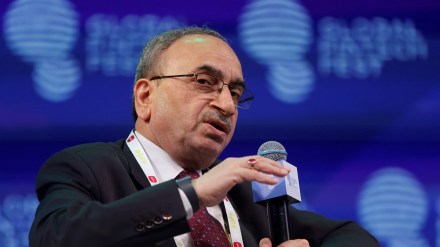The calmness of the financial market off late when markets in developed economies were in a tailspin has shown the maturity and depth embraced domestically and this to Dinesh Kumar Khara, “is a harbinger of better times to come.” This was one among the several comforting thoughts and insightful observations shared by the ever articulate and affable chairman of India’s banking behemoth – the State Bank of India.
He was digitally delivering his address at the just concluded inaugural edition of the Indian School of Business’ ISB Insights Forum at its verdant and salubrious campus in Mohali. A conference that had some of the finest minds brainstorming on the journey ahead for a better and more inclusive world by 2047, saw Dinesh Khara saying, “focus on the four ‘I’s – innovation, infrastructure, investment and inclusivity – to accomplish sustainable growth over the long-term will remain key to our collective endeavours.”
The strong balance sheets of banks along with digital adoption of digital business model, he said, “was amplifying the ability to finance various niche areas from MSMEs to corporates to consumption-centric segments.”
Sketching the emerging financial landscape, Khara saw “with the unprecedented surge in customers entering the financial main market, challenges multiplying to provide the best-in-class experience-centric banking to a sizeable customer base.” Seeing a clear future in collaborative, customer-centric approaches, he said, “the increasing collaboration between banks, NBFCs and fintech firms is important as the market is geared towards a collaborative approach where competition does not deter some of us from partnering with institutions that we believe can ensure a faster last mile delivery.”
To him, India’s digital infrastructure makes it an exciting marketplace for private providers “to innovate on low value, large volume business models combining customer-centricity and technology allowing financial service providers to offer solutions that are commercially attractive.” However, in order to build trust and help people see the benefit of using financial services, the providers needed to provide a convenient customer experience while utilising the financial services.
He reminded that despite a population base of 1.4 billion people about 73 per cent of the adults were yet to improve upon their understanding of the basic financial concepts. “With a supporting demographic dividend, India had the potential to be among the top financially literate countries,” he said while staying quick to add that in financial education, it was crucial to note that “a one size fits all approach cannot assure the desired learning curve” and that “providing financial literacy requires a multi-dimensional approach to bring out the best of the intended policy actions.” What was needed was, “encouraging active savings behaviour, encouraging participation in financial markets to meet financial goals and objectives, developing credit discipline, apart from delivering knowledge about rights and duties for grievance redressal.”
On the journey thus far, he said, “with the JAM trinity (Jan Dhan bank accounts, Aadhaar cards and mobile phones) and a mass financial inclusion riding on schemes such as Jan Dhan and Jan Suraksha, more than 80 per cent adults in India, at the moment, had a formal financial account compared to 50 per cent few years back. As on date, banks, he said, had opened over 51 crore PMJAY accounts with a balance of almost Rs 2.10 trillion (Rs 2 lakh crore) increasing three-fold from the almost 15 crore accounts with just 12,000 odd crore in March 2015. This movement, he did not fail to remind, was “largely front-lead by public sector banks.”
On the Mudra loans, which he described as “a revolutionary micro-credit programme at population scale that has been a vehicle of sustainable change, he said: As on date, around 450 million loans have been extended since the inception of the scheme in April 2015. “Out of this about two-thirds of the loans have been extended to woman entrepreneurs and nearly half of the loans have been availed by hitherto social marginalised groups making them break into the mainstream. We have seen a positive impact on subsidies to states as a result of higher mudra loans being disbursed.”
“The formalisation of economy through digitisation of payment systems,” he said, “provided a avenue for better credit assessment of the citizens who in the past may not have been eligible for consumer loans popularly known as -thin credit files.”
Observing that as the financial sector develops and augments the solutions, credit to households will only increase further fuelling the consumption story manifold, he said, “India is pursuing a distinct model for the digitisation of its economy – digital differentiation supported by a public utility model called India stack, a transaction-led, low cost, high volumes small ticket-size system which embeds lending options across value chains,” and added the now popular phrase to describe the Indian financial market journey as one about taking the country “from a prepaid economy to a postpaid economy” reminding that “the digital revolution was already changing the way India makes payments, invests, lends, spends and insures.”
